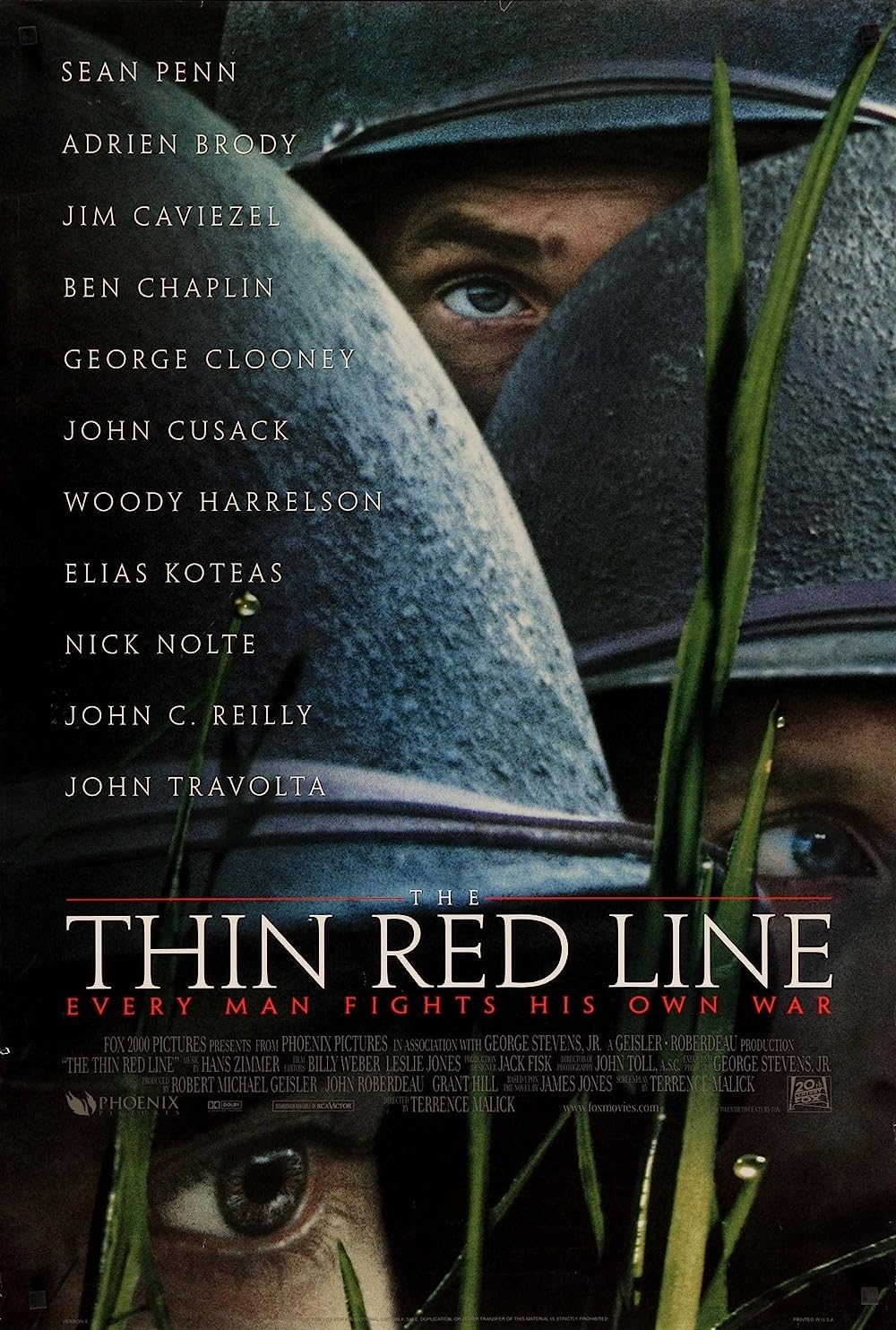Introduction:
Released in 1998, “The Thin Red Line,” directed by Terrence Malick, stands as an epic war film that transcends traditional genre boundaries. Adapted from James Jones’s novel of the same name, the film takes viewers on a profound journey through the Pacific Theater of World War II. Renowned for its philosophical depth, stunning cinematography, and ensemble cast, this comprehensive review aims to delve into the various layers of “The Thin Red Line,” exploring its narrative complexity, visual aesthetics, performances, thematic richness, and the enduring impact it has had on the war and adventure film genres.
I. Unraveling the Complexity of the Narrative:
- Philosophical Exploration: “The Thin Red Line” is not a conventional war film; instead, it serves as a contemplative exploration of the human condition amidst the chaos of war. Terrence Malick infuses the narrative with existential and philosophical inquiries, delving into the nature of life, death, and the interconnectivity of all living things.
- Multiple Perspectives: The film employs a multi-perspective narrative, shifting between characters and their inner thoughts. This approach allows the audience to witness the war through various lenses, emphasizing the individual experiences and internal struggles of soldiers.
II. Visual Aesthetics and Cinematography:
- Naturalistic Beauty: Cinematographer John Toll captures the lush and untamed beauty of the Guadalcanal landscape, juxtaposing the brutality of war with the serenity of nature. The film’s visual aesthetics are a testament to Malick’s signature style, marked by expansive shots and contemplative visuals.
- Use of Light and Shadow: The play of light and shadow in “The Thin Red Line” contributes to its visual poetry. The juxtaposition of natural light and the dark realities of war creates a visual dichotomy that mirrors the contrasting themes within the narrative.
III. Ensemble Cast and Performances:
- An All-Star Cast: “The Thin Red Line” boasts an ensemble cast featuring notable actors such as Sean Penn, Jim Caviezel, Adrien Brody, Nick Nolte, and more. The ensemble nature of the cast allows for a tapestry of performances that contribute to the film’s thematic richness.
- Individual Performances: Standout performances include Jim Caviezel as Private Witt, whose introspective narration guides the audience through the film, and Nick Nolte as Colonel Tall, a complex character navigating the moral challenges of war. The ensemble cast collectively brings depth to their characters, contributing to the film’s emotional impact.
IV. Thematic Richness:
- Nature vs. Humanity: Central to “The Thin Red Line” is the juxtaposition of nature’s beauty with the destructiveness of war. Malick explores the idea that nature continues its cycle despite human conflict, raising questions about humanity’s place in the larger tapestry of existence.
- The Fragility of Life: The film contemplates the fragility of life and the ephemeral nature of existence. The juxtaposition of life and death becomes a recurring theme, prompting viewers to reflect on the transience of both individual lives and the broader human experience.
V. Impact on the War and Adventure Film Genres:
- Genre Defiance: “The Thin Red Line” defies traditional genre conventions, standing out as a war film that transcends the boundaries of the genre. Its emphasis on philosophical inquiries, introspective narration, and visual poetry set it apart from more traditional war narratives.
- Influence on Filmmaking: The film has had a lasting impact on the war and adventure film genres, influencing subsequent filmmakers to explore the human psyche and existential themes within the framework of war. Its influence is evident in the emergence of more introspective and philosophical war films.
VI. Ethical and Moral Questions:
- Moral Ambiguity: “The Thin Red Line” grapples with the moral complexities of war, depicting characters who are not easily categorized as heroes or villains. The film challenges traditional notions of heroism, prompting viewers to confront the moral ambiguity inherent in the human experience of war.
- Environmental Ethics: The film’s emphasis on the interconnectedness of all living things raises environmental and ethical questions. It prompts viewers to consider the impact of human actions on the natural world and the ethical responsibility to protect the environment.
Conclusion:
“The Thin Red Line” stands as a cinematic masterpiece that goes beyond the conventional boundaries of war and adventure filmmaking. Terrence Malick’s visionary direction, coupled with stunning cinematography and powerful performances, creates a film that is not just about war but a contemplative exploration of the human condition. Its enduring impact on the war and adventure film genres has solidified its place in cinematic history as a work of profound artistry and thematic richness. “The Thin Red Line” remains a testament to the potential of cinema to elevate storytelling to a realm of philosophical inquiry and visual poetry.
